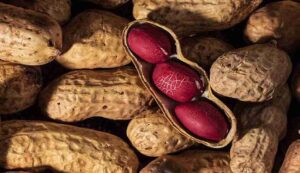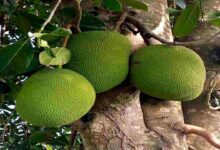Groundnut Cultivation: If you want to get huge profits from peanut cultivation, then adopt these measures today
Groundnut Cultivation: One of the main oilseed crops grown during the Kharif season in India is peanuts. In states like Rajasthan, Gujarat, Madhya Pradesh, and Maharashtra, it is widely cultivated. For farmers, this crop is a significant source of revenue. The output of peanuts may be greatly boosted if farmers use the required crop management techniques. Farmers can safeguard the peanut crop from pests and illnesses while also increasing yields significantly with a little prudence and scientific approaches.

Plant throughout the first two weeks of June
The first and second weeks of June are the best times to plant peanuts, according to the Rajasthan Agriculture Department. The weather has just the correct amount of moisture right now, which helps the seeds germinate. The most crucial stage for a high crop production is timing your seeds.
Actions to boost yield
The correct quantity of fertilizer and appropriate seed treatment are required for successful peanut production. Before planting, each acre should get 15 kg of nitrogen and 60 kg of phosphate. Add 30 kg of potash to the field if there is a potash shortage. In addition, shortly after seeding, use 800 grams of a herbicide containing the active ingredients of Pendimethalin (30%) and Egizathapar (2%) per hectare, or one kilogram of Pendimethalin (30%) solely per hectare, to suppress weeds. Additionally, weeding needs to be done 30 days later.
The way seeds are treated is crucial
In order to prevent illness and get a high yield, seed care is crucial. Apply a fungicide to the seeds prior to planting, such as Mancozeb at a rate of 2 grams per kilogram of seed or Carboxin 37.5% + Thiram 37.5% at a rate of 3 grams per kilogram of seed.
Treat with 1.5 grams of Thiram and 10 grams of Trichoderma per kilogram of seed if growers choose to use fewer pesticides. Next, let the seeds dry in the shade before planting them.
Rhizobium culture boosts production
Applying rhizobium culture to seeds boosts their yield in addition to their nitrogen content. This is accomplished by boiling 300 grams of jaggery in 2.5 liters of water, then adding 600 grams of rhizobium culture after it has cooled. Spread this mixture evenly over the peanut seeds, let them dry in the shade, and then plant them.
How collar rot may be avoided
In peanut crops, collar rot is a dangerous disease. This may be avoided by mixing 100 kilograms of rotting cow dung with 2.5 kg of Trichoderma per acre before planting. In addition, the seeds must be treated with the fungicides listed above. Make appropriate drainage measures since this illness is more prevalent in thick and damp soil.
Effectively control subterranean pests
The peanut crop is severely damaged by subterranean pests such as termites and white caterpillars. Before planting, spread 250 kg of neem cake per hectare throughout the field to avoid these. Treat the seeds with either 2 grams of Clothianidin 50WDG per kg of seed or 6.5 milliliters of imidacloprid 600 FS per kg of seed to prevent white grit.
Use caution while handling agricultural chemicals
When utilizing agricultural pesticides, farmers should be very cautious about their safety. It is required to wear complete clothing, a mask over the mouth, and gloves on the hands while spraying the medication. Additionally, when treating seeds, apply a fungicide or pesticide first, followed by a rhizobium culture.

